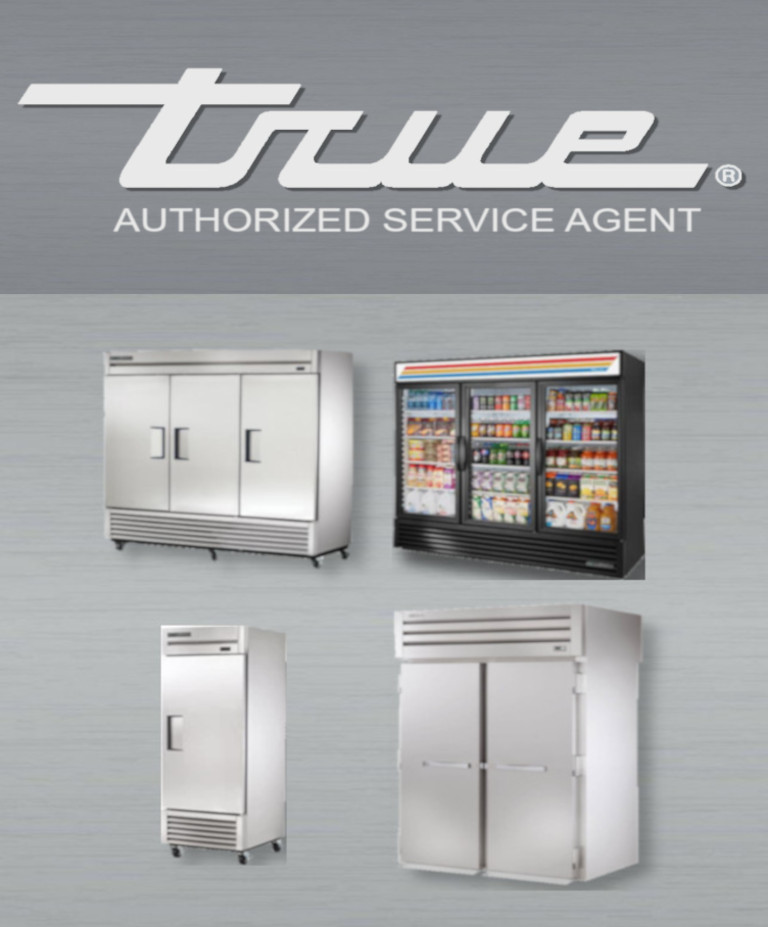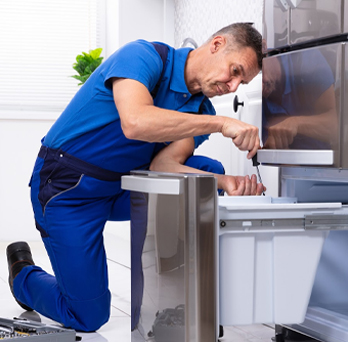Essential Advantages of Using Subzero Repair Service Dependable Refrigeration & Appliance Repair Service for Faster Home Repairs
Essential Advantages of Using Subzero Repair Service Dependable Refrigeration & Appliance Repair Service for Faster Home Repairs
Blog Article
The Ultimate Guide to Do It Yourself Device Repair Techniques
When devices damage down, it's very easy to feel overloaded. Dependable Refrigeration & Appliance Repair Service. Yet with the ideal expertise and devices, you can deal with usual problems on your own. From fridges to dish washers, understanding how to repair and repair these tools can conserve you time and cash. Are you prepared to uncover essential strategies that will equip you to manage repair work with confidence? Let's discover the vital areas where DIY abilities can make a substantial difference.
Recognizing Common Appliance Troubles
When you count on your home devices, it can be annoying when they all of a sudden stop functioning or act up. Comprehending usual home appliance issues can assist you troubleshoot concerns efficiently.
If your stove isn't heating, damaged aspects or thermostat issues can be at fault. Dishwashers frequently experience troubles with water drainage, so make certain the filter is clean and the drain pipe isn't kinked.
Additionally, listen for uncommon sounds; they usually show mechanical issues. By identifying these indications, you can conserve time and potentially stay clear of expensive fixings. A little knowledge goes a long way in maintaining your home appliances, so stay educated to maintain whatever running smoothly.
Important Devices for DIY Fixes
Before diving into DIY home appliance repair services, it's crucial to collect the right devices to guarantee the process goes efficiently. Begin with an excellent collection of screwdrivers, including both flathead and Phillips, as they're crucial for opening most appliances. You'll also want a pair of pliers for gripping and turning cords or small parts.
Don't forget a multimeter; it helps you test electrical components and diagnose concerns properly. An outlet set comes in handy for loosening up or tightening bolts, while an utility blade can be beneficial for reducing cords or opening product packaging.
Lastly, consider having a flashlight on hand to brighten dark spaces inside your appliances. With these important tools, you'll be well-equipped to take on various repairs, saving both money and time. Gather your equipment and obtain prepared to roll up your sleeves!
Security First: Preventative Measures to Take
Before you begin any type of device repair, it's necessary to prioritize safety and security. Make specific you wear individual protective tools, separate the source of power, and keep your job location organized. These straightforward safety measures can aid stop crashes and assure a smoother fixing process.

Individual Safety Equipment
Safety gear is an important part of any type of DIY home appliance repair work job. You must always use safety goggles to safeguard your eyes from dust and particles. A strong pair of handwear covers will protect your hands from sharp sides and harmful materials. Consider making use of a mask if you're managing chemicals or dirt, ensuring you breathe safely while working. Steel-toed boots are additionally a clever selection, particularly when lifting heavy home appliances. Don't neglect to use lengthy sleeves and trousers to safeguard your skin from prospective injuries. By focusing on individual safety equipment, you'll significantly decrease the risk of crashes and injuries. Remember, being prepared with the ideal equipment keeps you safe and focused on completing your repair work effectively.
Source Of Power Interference
To guarantee a risk-free DIY appliance fixing, disconnecting the source of power is crucial. Prior to you start any kind of work, you ought to unplug the device or turn off the circuit breaker. This easy step protects against electrical shocks and warranties that you can concentrate on the fixing without fretting about unintentional activation. Constantly double-check that the home appliance is off by evaluating it with a voltage tester. If you're handling larger home appliances, like a washer or dryer, make sure to protect the power cord and avoid any type of contact with water. Keep in mind, safety! As soon as you're positive that the power is separated, you can confidently proceed with your repairs, recognizing you have actually taken the necessary preventative measures to shield on your own.
Workplace Organization
An efficient work area can make all the distinction in your DIY device repair work job. Start by removing your work space of clutter to protect against interruptions and crashes. A tidy room not only increases effectiveness but also maintains you risk-free while you work on your device fixing.
Step-by-Step Overview for Fridge Services
When your refrigerator starts breaking down, it can be frustrating, however taking on the trouble on your own can save you money and time. Disconnect the fridge to ensure safety and security. Inspect for common concerns like temperature changes or uncommon sounds. Examine the thermostat settings; they might be set too high if it's not cooling down. Next off, tidy the condenser coils, which usually collect dirt and debris. For a loud fridge, check the follower and validate it's not obstructed.
If there's water merging inside, inspect the door seals for damage or dirt, and clean them if necessary. When you've attended to the problem, connect the fridge back in and check it for a couple of hours.
Taking Care Of Washing Maker Problems
Much like fridges, washing devices can present their very own set of obstacles, however many problems can be settled with a little troubleshooting. If your equipment won't begin, examine the power cord and confirm it's connected in. Next, examine the door lock; a defective lock can prevent the cycle from starting. If you observe unusual sounds throughout operation, it may be as a result of international items embeded the drum or the drainpipe pump.
If your clothing aren't getting clean, think about the water level and cleaning find out this here agent type; utilizing as well much detergent can produce excess suds, affecting efficiency. For leakages, analyze the hose pipes for cracks or loose connections. Tightening up these can usually resolve the issue. Normal maintenance, like cleaning the additional resources filter, can stop several problems from occurring. Keep in mind, a little troubleshooting goes a long method in keeping your washing machine running smoothly.
Fixing Ovens and Stoves
How can you repair typical issues with your oven or stove? Start by checking the power supply. Ensure it's plugged in and the circuit breaker is not tripped. Confirm the gas valve is open if it's a gas cooktop. Next off, test the burners: if they do not fire up, clean the igniter and look for obstructions in the burner ports.
If your stove isn't home heating, inspect the temperature level settings and verify the door seals snugly. If it's harmed., a faulty heating element can additionally be the wrongdoer; you could require to change it.
For irregular food preparation, turn your frying pans and take into consideration using a stove thermostat to verify accurate temperature levels. Ultimately, if you listen to uncommon sounds or smell gas, shut off the appliance instantly and seek advice from an Home Page expert. By adhering to these actions, you can recognize and deal with lots of common stove and range problems successfully.
Fixing Dishwashing Machines Facilitated
When your dishwasher starts breaking down, it can be aggravating, however attending to common issues isn't as difficult as it appears. You'll learn detailed troubleshooting techniques that will certainly help you determine the issue, in addition to the crucial tools you'll need to take on fixings on your own. Let's make fixing your dishwasher a breeze!
Usual Dishwasher Issues
While dishwashers are made to make your life much easier, they can occasionally run right into typical problems that leave you feeling discouraged. One frequent issue is inadequate cleansing efficiency; this frequently occurs because of stopped up spray arms or dirty filters. You could likewise see water pooling near the bottom, which can suggest a defective drainpipe or a kinked tube. If your dish washer's door will not lock, it could be a straightforward concern with the latch mechanism or door seal. Additionally, strange sounds can indicate damaged parts or loosened components. Lastly, if you scent something strange, it may be time to check for food debris or a malfunctioning motor. Dealing with these problems early can save you time and inconvenience later on (Dependable Appliance For SubZero Freezer Repair).

Step-by-Step Troubleshooting
Before diving right into fixings, it's important to recognize the details problem your dishwasher is facing. If your dishwashing machine will not begin, inspect the power supply and door latch. By carefully attending to each possible problem, you can pinpoint the trouble and take the necessary steps to fix it, making your dish washer feature like brand-new again.
Necessary Repair Tools
Having the right devices at your disposal can make all the distinction when fixing your dishwasher. Don't fail to remember a pail or towels for any type of water spills throughout repair work.
If you're taking on blockages, a drain snake or a wet/dry vacuum cleaner will be very useful. You might also desire a degree to guarantee your dishwasher's properly aligned. Lastly, safety and security equipment like gloves and safety glasses will certainly safeguard you while you work. With these crucial devices, you'll be fully equipped to deal with any type of dishwasher fixing difficulty that comes your method.
Often Asked Inquiries
If a Home Appliance Is Well Worth Repairing?, just how Do I Figure out.
To identify if a device's worth fixing, consider its age, repair work costs, and current value. If fixings go beyond half the replacement expense, you may intend to buy a new design instead.
Can I Find Substitute Parts In Your Area for My Device?
Yes, you can typically find substitute parts locally for your device. Inspect equipment stores, device service center, or regional classifieds. Do not forget to bring the design number to ensure you get the proper component!
What Usual Mistakes Should I Avoid When Fixing Devices?
When fixing appliances, prevent rushing with diagnostics, disregarding security preventative measures, or making use of inaccurate tools. Do not avoid reading handbooks or viewing tutorials; they offer vital advice. Be patient and thorough to ensure successful repairs and stop additional damage.
How Long Does a Common DIY Appliance Repair Work Take?
A regular do it yourself appliance repair generally takes one to 3 hours, relying on the complexity. You'll desire to collect your tools and materials initially, and adhere to guidelines very carefully to avoid unnecessary hold-ups.
Exist Any Type Of Guarantees for DIY Appliance Services?
When you deal with do it yourself device fixings, service warranties typically don't cover your work. Some suppliers may recognize service warranties for components you replace. Constantly inspect your device's service warranty terms before starting any type of repair services to prevent issues.
Before diving into Do it yourself device repair services, it's important to gather the right devices to assure the process goes smoothly.Prior to you start any home appliance repair work, it's crucial to prioritize safety and security.To assure a secure DIY device repair service, separating the power resource is crucial.A well-organized work location can make all the distinction in your Do it yourself device repair service job. Always check your device's warranty terms before starting any repair work to avoid concerns.
Report this page